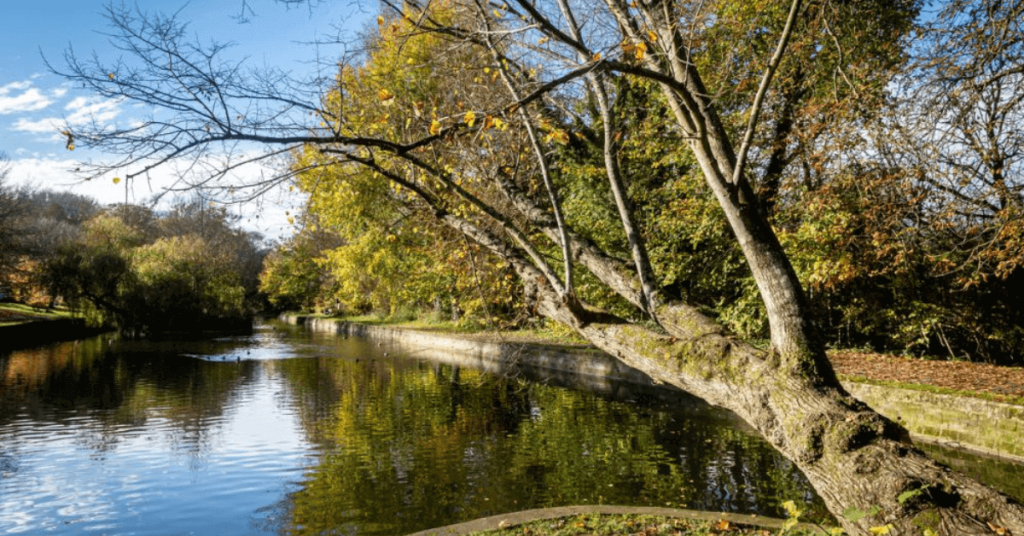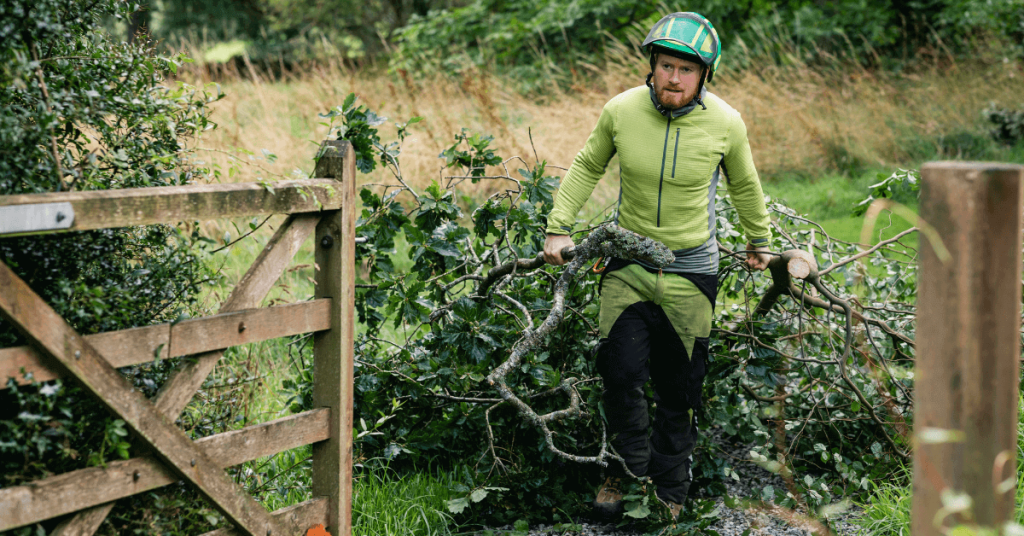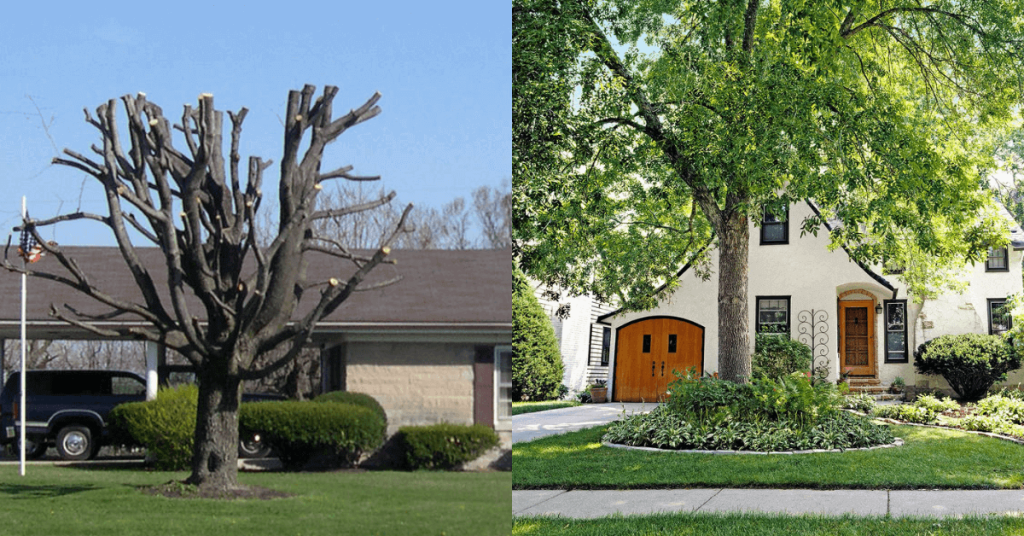Tree falls can cause significant damage to homes, property, and even people. Unfortunately, most tree owners do not recognize warning signs before the actual fall. Knowing the warning signs of an unhealthy tree is the key to protecting yourself from potential damage caused by falling trees or limbs.
In this blog post, we’ll take a look at the various indicators that your tree could be on the brink of falling and what to do if you think your tree is in danger of falling. We’ll also discuss how to safely remove a tree from your property. Keep reading if you want to make sure that your trees are properly taken care of!
6 Tree Falling Signs
To ensure the safety of your family and property, it’s important to recognize certain signs that could indicate when a tree may be at risk of falling. These warning signs include:
- A significant lean in one direction: If you notice that a tree has started to lean in one direction, it could mean that its roots have become weak and are at risk of falling.
- Cracks in the trunk or branches: If you see any visible cracks in the trunk or branches, this could be an indication that the tree’s structure has become compromised and is susceptible to collapse.
- Damaged roots near the base of the tree: Any exposed roots or areas with visible damage can indicate that the tree is not properly rooted in the ground and could be vulnerable to falling.
- Mushroom-like fungi at the base of the tree: These fungi are often a sign that decay has started to set in, which could put your tree at risk of falling.
- Excessive or dead branches: If there are excessive or dead branches on your tree, this can create an unbalanced and unstable structure that is at risk of falling.
- Signs of rot in the trunk: If the trunk appears to be soft or there are signs of decay, it could mean that the tree has become structurally weak and might not be able to withstand strong winds or weather conditions.
If you notice any of these signs, it’s important to have your tree inspected by a qualified arborist to determine if it poses a safety risk.
How to identify a tree that’s in danger of falling?
Trees that are in danger of falling can be identified by looking for signs of damage or decay, such as dead or missing branches, cracks, and other visible signs of weakness. Additionally, if the tree is leaning more than 15 degrees from its normal vertical position, it is likely to be at risk of falling and should be evaluated by an arborist or tree expert.
If a tree is surrounded by other trees or structures, the risk of it falling increases as the surrounding objects can act as additional forces on the tree, making it more unstable and prone to collapse.
What to do if you think your tree is in danger of falling?
- Contact an arborist or tree service for professional assessment and advice.
- If the tree is in danger of falling, it is best to contact with Aberdeen tree management department.
- Secure your property by removing anything that may be damaged if the tree falls.
- Consider hiring professionals to remove the tree if it cannot be saved.
- Consult your local government or utility company for advice and assistance if the tree is located near power lines.
- Take preventive measures such as trimming, cabling, bracing, staking, or propping to support a weakened tree.
- If you are uncertain about whether to remove a tree, consider hiring an arborist to help make a decision.
- If you decide to remove the tree, contact a professional tree service for assistance.
- Make sure to follow all safety protocols during the removal and disposal of the tree.
When to call a professional arborist?
Calling a certified arborist is the best way to ensure proper care of trees on your property. A professional arborist should be consulted whenever you are considering pruning, fertilizing, or removing any trees from your landscape. If you notice signs of disease or insect infestation in your trees, it’s important to call an arborist right away as they can help to diagnose and treat the problem.
An arborist should also be called if you are unsure of what type of tree is growing on your property or need advice on proper care techniques. Finally, an arborist can provide valuable input when deciding where best to plant a new tree in your landscape. By consulting with a knowledgeable professional, you can be sure you are taking the best possible care of your trees
How to safely remove a tree from your property?
Removing a tree from your property can be an intimidating task. If it is done incorrectly, it can cause serious damage to the surrounding area or even create a dangerous situation for anyone that may be nearby.
To ensure that the removal of the tree is handled safely and properly, there are some important steps you should take :
- Assess the tree to determine if it poses any immediate danger: This includes looking for any signs of rot, disease, or insect infestation that could cause the tree to become unstable and possibly fall over: If there is a chance that the tree may be hazardous, contact a professional arborist or tree removal service immediately.
- Determine a plan of action for removing the tree: Depending on the size and location of the tree, you may need to use professional equipment such as a crane or chainsaw to safely remove it.
- Clear any obstacles that could be in danger when the tree is removed: This includes cars, buildings, and other properties that could be damaged if the tree falls in the wrong direction.
- Wear protective gear and follow all safety protocols when operating any equipment or handling tools related to tree removal.
If you are not comfortable performing the work yourself, contact a professional tree service for assistance. They will be able to provide expert advice and guidance throughout the entire process.
Once the tree has been removed, take the time to properly dispose of it. You can either have a professional haul it away or you may be able to recycle some parts of the tree for use in your garden or landscape.
Final Words
Before a tree falls and causes damage to your property or injures someone, it will often exhibit certain warning signs. If you notice any of these red flags on a tree on your property, don’t hesitate to reach out to a certified arborist for help. With their expertise, they can determine whether or not the tree needs to be removed and take care of it before it becomes a problem.
Even if you don’t have an arborist’s expertise, you can still inspect your trees for warning signs that indicate they may fall. By being vigilant and catching these signs early, you can often take corrective action to prevent disasters.




